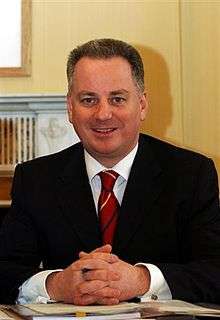Scottish local elections, 2007
| | |||||||||||||||||||||||||||||||||||||||||||||||||||||||||||||||||||||||||||||||||||||
| |||||||||||||||||||||||||||||||||||||||||||||||||||||||||||||||||||||||||||||||||||||
| |||||||||||||||||||||||||||||||||||||||||||||||||||||||||||||||||||||||||||||||||||||
|
| |||||||||||||||||||||||||||||||||||||||||||||||||||||||||||||||||||||||||||||||||||||
| Colours denote the winning party with outright control | |||||||||||||||||||||||||||||||||||||||||||||||||||||||||||||||||||||||||||||||||||||
|
| |||||||||||||||||||||||||||||||||||||||||||||||||||||||||||||||||||||||||||||||||||||
| Colours denote the party with the most seats | |||||||||||||||||||||||||||||||||||||||||||||||||||||||||||||||||||||||||||||||||||||
|
| |||||||||||||||||||||||||||||||||||||||||||||||||||||||||||||||||||||||||||||||||||||
| Colours denote the party with largest share of first preference votes by ward | |||||||||||||||||||||||||||||||||||||||||||||||||||||||||||||||||||||||||||||||||||||
The Scottish local elections, 2007 were held on 3 May 2007, the same day as Scottish Parliament elections and local elections in parts of England. All 32 Scottish councils had all their seats up for election – all Scottish councils are unitary authorities.
Background
This was the first election for local government in Great Britain to use the Single Transferable Vote (the system is used in Northern Ireland), as implemented by the Local Governance (Scotland) Act 2004. The new electoral system resulted in most councils being under no overall control.
eCounting fiasco
Scanners supplied by DRS Data Services Limited of Milton Keynes, in partnership with Electoral Reform Services (ERS), the trading arm of the Electoral Reform Society, were used to electronically count the paper ballots in both the Scottish council elections and the Scottish Parliament general election.[2][3]
Because of the fiasco in 2007 of holding parliamentary (Holyrood) and local elections simultaneously, the following Scottish local elections were held in 2012 instead of 2011.
Party performance
The Labour party lost control of all but two of its councils, Glasgow and North Lanarkshire, but received the largest number of votes, while the SNP were the main beneficiaries of the new voting system, picking over 180 new seats. The Scottish Greens elected their first-ever councillors, winning eight seats.
Results
| Parties | First-Preference Votes[5] |
Votes % | +/- | Councillors | Net Gain/Loss | |
|---|---|---|---|---|---|---|
| Labour | 590,085 | 28.1 | −4.5% | 348 | −161 | |
| SNP | 585,885 | 27.9 | +3.8% | 363 | +182 | |
| Conservative | 327,591 | 15.6 | +0.5% | 143 | +21 | |
| Liberal Democrats | 266,693 | 12.7 | −1.8% | 166 | −9 | |
| Independent | 228,894 | 10.9 | +0.8% | 192 | −38 | |
| Other | 102,897 | 4.9 | +1.3% | 10[6] | +6 | |
| Total | 2,099,945 | 1,222 | ||||
| Party | Councils - majority | Councils - in coalition/minority | Councillors | |
| SNP | 0 | 11 | 363 | |
| Labour | 2 | 11 | 348 | |
| Liberal Democrats | 0 | 12 | 166 | |
| Conservative | 0 | 8 | 143 | |
| Scottish Green | 0 | 0 | 8 | |
| Scottish Socialist | 0 | 0 | 1 | |
| Solidarity | 0 | 0 | 1 | |
| Other | 3 | 9 | 192[7] | |
| No overall control | 27 | - | - | |
Councils
The notional results in the following table are based on a document that John Curtice and Stephen Herbert (Professors at the University of Strathclyde) produced on 3 June 2005, calculating the effect of the introduction of the Single Transferable Vote on the 2003 Scottish Local Elections.[8]
Notes and references
- ↑ p.11
- ↑ "Electronic counting to take over from tellers at elections", The Scotsman, 19 April 2006
- ↑ "Green light for DRS & ERS to deliver e-Count for 2007 Scottish Elections", press release, DRS Data Services Limited
- ↑ Figures from the Electoral Commission's Scottish Parliamentary and local elections 2007 statutory report
- ↑ Votes for parties are back-calculated from percentages and the total vote, so are subject to rounding error
- ↑ 8 Scottish Green Party, 1 Scottish Socialist and 1 Solidarity councillor. Separate vote figures not found
- ↑ 193 according to the BBC website
- ↑ http://www.scottish.parliament.uk/business/research/briefings-05/SB05-31.pdf
- ↑ Labour minority control. The council was previously run by a coalition of Scottish Liberal Democrats, Independents and the SNP.
- ↑ Liberal Democrats lack a majority (LD: 12 councillors; opposition: 12 councillors)
- ↑ Labour lack a majority, after by election loss to Scottish National Party (Lab: 29 councillors; opposition: 29 councillors)
- ↑ Labour minority administration
- ↑ Conservative and Unionist control, on a cut of the cards (Con: 15 councillors; opposition: 15 councillors)
- ↑ Labour lack a majority, after by election loss to Scottish National Party (Lab: 11 councillors; opposition: 11 councillors)



.svg.png)
.svg.png)